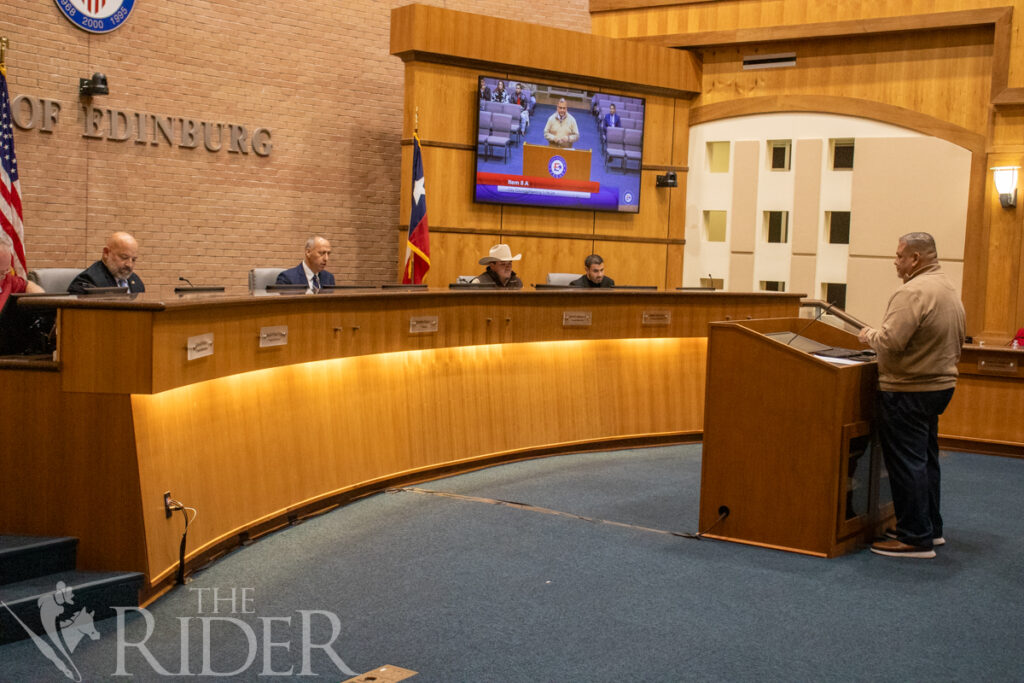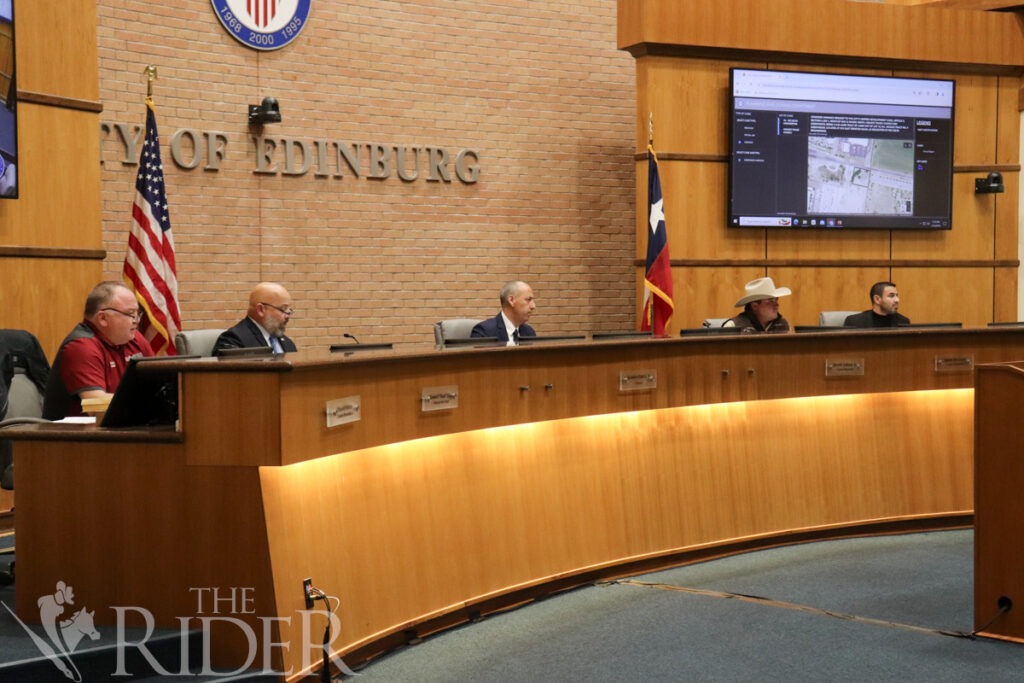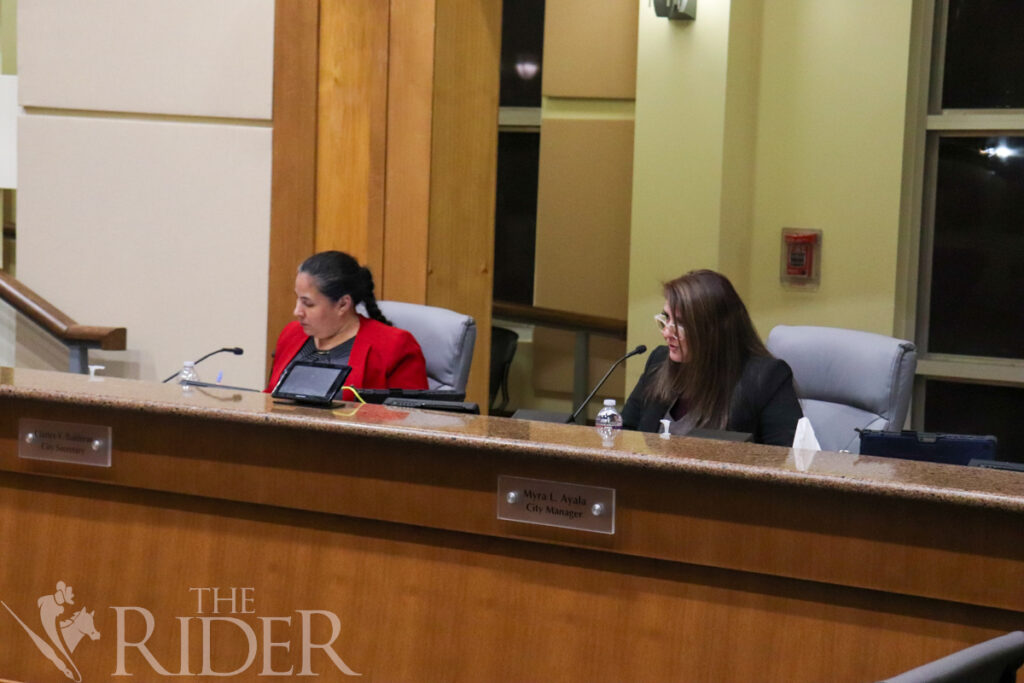
Eduardo Escamilla/THE RIDER
The Edinburg City Council last Tuesday approved an increase in water and wastewater rates that will go into effect March 1 to fund essential city improvements.
City Manager Myra L. Ayala told councilmembers that many subdivisions are still under septic systems.
“We would like to utilize some of these funds to create projects that will help convert their septic systems into the sanitary sewer infrastructure,” Ayala said.
The current rate of $24.48 is based on consumer usage at around 8,000 gallons per month, and along with the sewer rate of $16.47 is billed every month in Edinburg, according to Becky Treviño, utility billing supervisor.
Those rates are lower than the state average or any surrounding city, Ayala said. Even with the increase, it will remain comparatively lower.
Willdan Financial Services presented councilmembers with two scenarios from a utility rate study that was conducted to evaluate a five-year revenue forecast, according to the meeting agenda.
The recommended rates presented are to be increased in increments for a period of five consecutive years. Scenario 1 will increase by 11% and Scenario 2 by 8%.
Scenario 1 will gradually increase prices for consumers, and Scenario 2 will “hit them up front all at once,” according to Councilmember Place 2 Jason De Leon.
Mayor Ramiro Garza Jr. expressed the importance of holding a public hearing.
“I have an issue with telling everybody a few months ago, ‘Your rates are going to stay the same,’ and yet three or four months later, we’re telling everyone that we’re going to raise the rates,” Garza said.
His request to hold a public hearing before passing the ordinance was dismissed by other councilmembers who thought it would not be appropriate because the rate is a necessity, not an option.

Eduardo Escamilla/THE RIDER
The new rate plans enable the Utility Fund to fully fund all water and wastewater projects under the Capital Improvement Plan, maintenance, operating and construction costs and will provide for the Utility Fund to operate self-sufficiently with no need for General Fund subsidies, according to the document.
“There’s $250 million worth of projects on this Capital Improvement Plan,” Garza said. “… This [rate increase] also takes into account the debt service coverage. So … what is the actual rate it will take to take care of the debt and account for the projects?”
Estrada Hinojosa Investment Bankers, the city’s financial adviser, informed the councilmembers they will need to subsidize a newly incurred loan debt until the funding is available in the Utility Fund to transfer the debt, according to the agenda packet.
Estrada financial adviser Bobby Vela during the meeting warned councilmembers that if they waited to implement the rate increase until October, it would show struggle in an audit, delaying lenders from financing projects but, “if you institute it now [in March] you probably are getting five to six months of revenue that may mitigate the concern.”
“Rate agencies want to see some coverage for future projects,” Vela said.
Ascension Alonzo, director of finance, said the city’s goal is to balance as much as possible with the resources available, and not commit to anything they do not have.
“In a perfect world, the Utility Fund should be self-sustaining,” Alonzo said. “It should be paying debt … operations. … Unfortunately, right now, because of some of [capital leases] that occurred, we’ve had to work with other resources and it’s not self-sustaining.”
Councilmembers appeared uncomfortable with the idea of presenting residents with a new rate increase but also recognized the importance of not “kicking the can,” as Councilmember Place 4 David White put it, and assuring the best for the city’s future.
The council meeting concluded with a decisive 4-2 vote, passing the proposed ordinance. Garza and Mayor Pro Tem Daniel “Dan” Diaz cast the dissenting votes.
The rate increase approved was presented to councilmembers as Scenario 1 and will go into effect on March 1. Residents will see another increase at the start of the new fiscal year in October.
City staff will notify residents of the rate increase along with a grace period effective immediately and will provide a revised ordinance of the rate increase.

Eduardo Escamilla/THE RIDER





